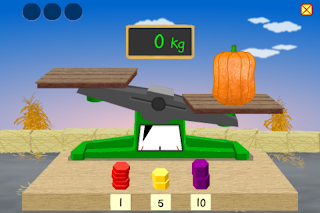We have a
vast ocean of learning and teaching resources available on the internet these
days. We also have access to tools with which to utilize these resources in the
classroom. ‘e-Learning’ marries the learning potential of digital tools with
learning theories, learning styles and good pedagogical practice.
Digital
tools are adaptable and complimentary to each of the commonly referred to
learning theories (behaviourism, cognitivism, social constructivism and
connectivism).
·
On
a behavioural level children learn new technological skills and experience
success using these skills.
·
Cognitivism
promotes learning in terms of sensory input which is processed onto long term
memory after it is ‘learned’. ICT provides for all types of sensory input.
·
Connectivism
emphasises the importance of knowing how and where to find information.
Equipping children with this knowledge is very relevant with the ease of access
to online resources.
·
Perhaps
the most relevant learning theory for e-Learning is the social constructivist
approach. Children learn from experience, social interaction and scaffolding.
ICT’s have so many applications available to embrace these aspects. Children
and teachers are able to investigate, communicate and collaborate. Online tools
such as blogs and Wikispace open up opportunities for scaffolding and enriched
learning experiences (see Appendix A). This wikispace activity is an example of
how collaboration can occur to inform analysis and evaluation.
Digital
tools are adaptable to each and every learning style. Interactive whiteboards
(available in most classrooms now) allow for interactive PowerPoint
presentations, video and projection of computer applications. Mobile devices
such as iPods allow for participation by methods limited only by imagination.
Children can participate in the simplest of educational apps or engage in their
own video presentations (see Appendix B). They can resource information on any
topic with access to the internet. Visual, auditory and kinesthetic learners
can be engaged with considered choice of activity by the teacher. Learning
experiences can be open ended and easily scaffolded (see Appendix C). This example of
a classroom wikispace exercise could be followed up with further research. Stages
can cater for active or reflective learners, sensing or intuitive learners,
visual or verbal learners, sequential or global learners (Felder, R., Soloman,
B. n.d).
Children
today are exposed to technology everywhere. Most can navigate a touch screen
better than their parents. They are very much ‘digital natives’ (Prensky, M.
2001). Pedagogical practice needs to be ICT inclusive to keep children engaged
in their learning. Lesson plans are not limited by content knowledge and
pedagogical knowledge. We can add technological knowledge now that we have
explored and are aware of the myriad of learning resources available
electronically and online. We can identify the particular learning styles in
the classroom and have a much greater choice in learning experiences that
support the best possible learning.
This greater
choice in learning experiences provides greater opportunity for promoting
higher order thinking. Simple knowledge and understanding can lead to further
questions and research, analysis and evaluation.
The
Australian Curriculum includes requirements for including ICT’s in student
learning. The following quote is from the “Scope of ICT Capability” within the
curriculum.
“Students develop capability in using ICT for tasks
associated with information access and management, information creation and
presentation, problem solving, decision making, communication, creative
expression, and empirical reasoning. This includes conducting research,
creating multimedia information products, analysing data, designing solutions
to problems, controlling processes and devices, and supporting computation
while working independently and in collaboration with others.”
Given that
the Australian Curriculum recognises the importance of ICT inclusion and
requires deep experience for learners (from information access to creative
expression and problem solving), teachers need to be technologically competent
and able to address curriculum scope for ICT with productive pedagogies.
Lesson
design with digital tools is easy to apply productive pedagogy dimensions to.
The scope to extend and scaffold learning and thinking is as vast as the
internet (see Appendix D). Mobile devices have immediate access to educational
apps that can be quickly and easily sourced as needed.
The
implications for myself involve improving my technological competence and
exposure. This e-Learning journey has enlightened me to so many digital tools
that I had not used before. I have explored along the way:
·
Blogs
·
QR
codes and applications
·
Mind
maps
·
wikispace
·
uploaded
and embedded items to blogs
·
resizing
photos
·
podcasting
·
video
uploads
·
animation
presentations
·
Prezi
presentations
·
Glogster
presentations
·
PowerPoint
presentations
·
Educational
apps for mobile devices
·
Working
legally, safely and ethically online
I have
learned about the infinite potential of these tools to provide enriching
learning experiences for children. E-learning experiences can be designed to
engage all of the learning styles in a classroom of young learners. They can
embrace and enhance the social and collaborative qualities that good pedagogy
requires.
Equipped
with this knowledge I can develop my teaching capabilities to prepare
appropriate learning experiences for young learners that will achieve the
highest learning outcomes and promote higher level thinking. I can assess a
schools’ resources and students’ learning needs. I can seek out resources and
ideas online then apply innovative ways to meet them.
References
ACARA
Australian Curriculum, Assessment and Reporting Authority – Information and
Communication Technology (ICT) capability
Retrieved
from
Felder, R.,
Soloman, B. (n.d) Learning Styles and
Strategies
Retrieved
from
Prensky, M.
(2001) Digital Natives, Digital
Immigrants
MCB
University Press, Vol.9 No.5, October 2001
Appendices
Appendix
A
Appendix
B
|
|
|
|
Appendix
D

